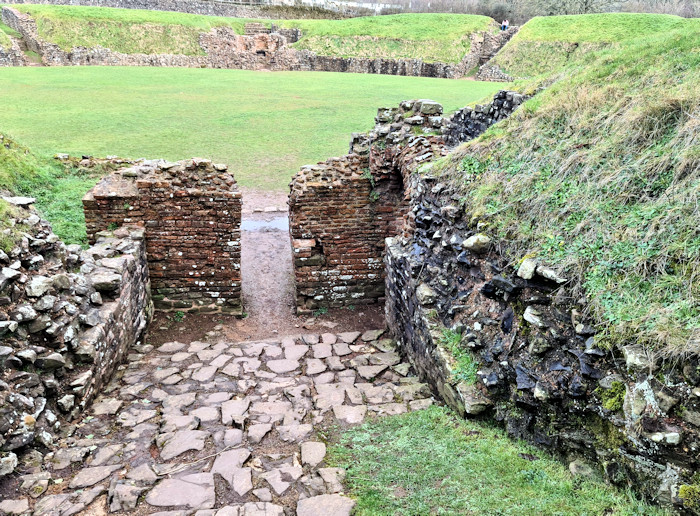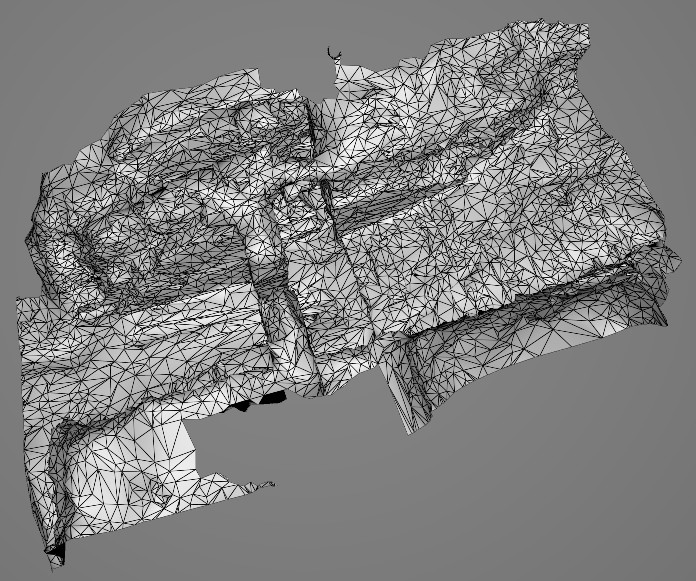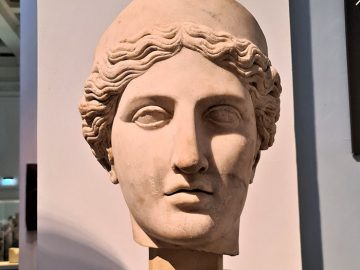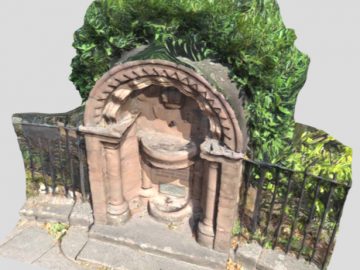Originally built around 90 AD Caerleon amphitheatre was a popular entertainment venue for the legionnaries, and others stationed there with them. It seated 6000 people and was improved in the second and third centuries. And, according to Geoffrey of Monmouth in the 12th Century AD, it was also the round table of King Arthur fame. On the southwestern side entrance there was once a holding pen with an exit into the arena and steps either side up to a private box above. The very similar holding pen directly opposite appears to have been added to in the second century to house the shrine to Nemesis, but according to the CADW plan this side is entirely from the original construction. So obviously it was an excellent subject for me to practice my photogrammetry skills on.

Quick summary of this 3D creation
Overview: A low-polygon 3D model of a late first century wall and steps.
Location: Caerleon Roman site, Caerleon, South Wales [map].
Date/era: Roman, c. 90 AD.
Software used: Kiri Engine, Meshmixer, Blender.
Intended use: Digital only (textured low-polygon).
Related posts: Caerleon Roman toilet block, Caerleon Nemesis shrine.
Download: Sketchfab page (non-commercial license).
The 3D scanning was done with the Kiri Engine app on an Android smartphone. It was based on 105 photos taken from different heights and angles all around the area. When the 3D model had processed on their website I downloaded it and extracted the low-poly version because I wanted a textured lightweight mesh that would work well for local history study in a web-browser. Then I reoriented and trimmed it in Meshmixer before importing it into Blender to delete some errant triangles and tidy up some untidy holes. And below you can interact with it on Sketchfab (click the play button to load the model and view it in 3D).
After all the editing the model ended up with 36069 vertices and 12023 triangles, plus a 4096×4096 texture image. And all-together the model in Wavefront OBJ format came to around four and a half megabytes unzipped. So I was quite happy with the result. And if you’re interested, below is a view of the low-poly mesh to give you an idea of how well it fits with the shape of the walls and steps.

I hope you enjoy this lightweight 3D scan of Roman history remains and maybe even find it useful for local history study, perhaps at Caerleon or another similar site near you 🙂




